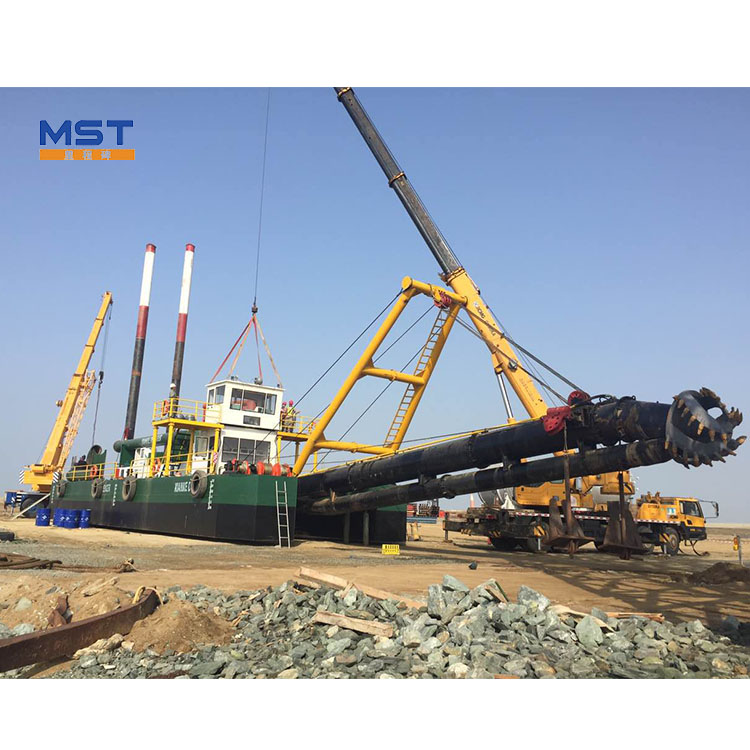What is cutter suction dredger?
2023-10-12
A cutter suction dredger (CSD) is a type of specialized maritime vessel or equipment used for dredging operations. Dredging is the process of excavating, removing, and transporting sediment, silt, sand, gravel, or other materials from the bottom of bodies of water like rivers, lakes, harbors, and channels. Cutter suction dredgers are particularly effective for removing soft to moderately hard materials from the seabed or riverbed.

Here are the key components and features of a cutter suction dredger:
1. Hull and Pontoon: The main structure of a CSD includes a hull and one or more pontoons that provide buoyancy and stability. The hull houses the engine, power generation equipment, and control room.
2. Suction Pipe: A large suction pipe, often referred to as the "cutter ladder," extends from the hull to the dredging location on the seabed. The pipe has a cutting head at the bottom designed to loosen and dislodge the sediment.
3. Cutter Head: The cutter head is a rotating device equipped with cutting tools, such as rotating blades or teeth, that break up and dislodge the sediment at the dredging site. The loosened material is then drawn into the suction pipe by the suction force generated by the dredge pump.
4. Dredge Pump: A powerful dredge pump is located on the CSD, near the engine or power generation equipment. It generates the suction force necessary to draw the sediment and water mixture from the seabed through the suction pipe.
5. Dredge Pipe: The dredged material, mixed with water, is transported through a large-diameter discharge pipe from the dredging site to a designated disposal area, such as a sediment containment area or a designated dumping site.
6. Spuds: Spuds are vertical hydraulic or mechanical poles that can be lowered to the seabed to stabilize the CSD during operation. They prevent the vessel from drifting and provide stability while cutting and pumping material.
7. Control System: Modern cutter suction dredgers are equipped with sophisticated control systems that allow operators to control various aspects of the dredging process, including the cutter head, suction power, and vessel positioning.
8. Navigation and Positioning: Some CSDs are equipped with advanced navigation and positioning systems to accurately maintain their position and track the progress of dredging operations.
Cutter suction dredgers are commonly used for various applications, including:
- Maintaining Waterways: Keeping rivers, channels, and harbors navigable by removing sediment buildup that could hinder navigation.
- Land Reclamation: Creating new land or extending existing coastlines by dredging and depositing material in designated areas.
- Environmental Remediation: Removing contaminated sediments from water bodies as part of environmental cleanup efforts.
- Infrastructure Development: Preparing the seabed for the construction of ports, piers, bridges, and other marine structures.
- Beach Nourishment: Replenishing eroded beaches by dredging sand from offshore areas and placing it onshore.
Cutter suction dredgers play a crucial role in maintaining water infrastructure, improving navigation, and facilitating various marine construction and environmental projects.


